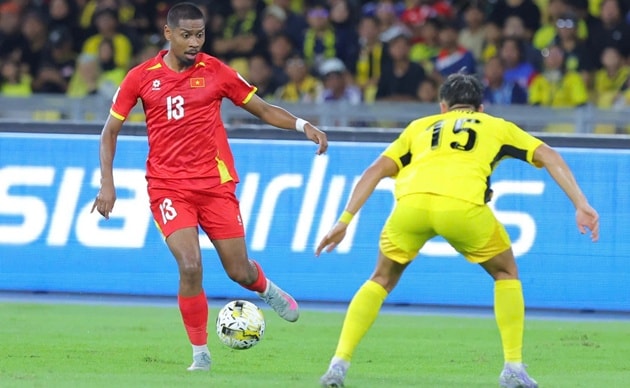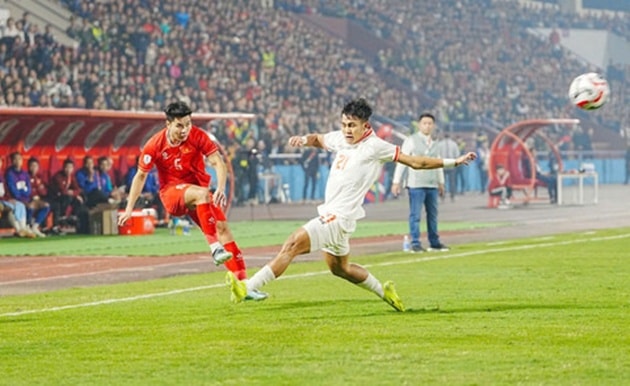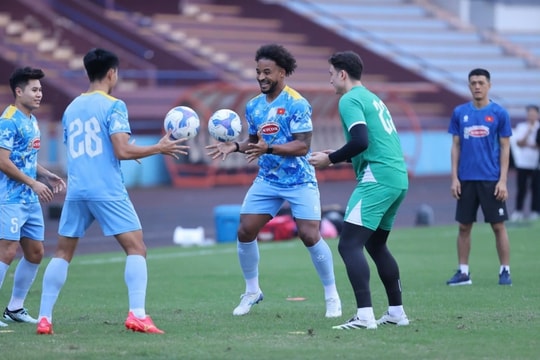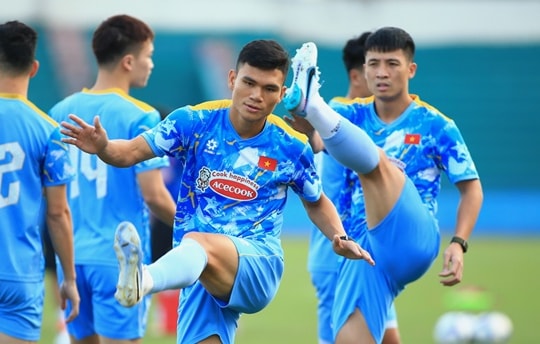Vietnam's two wings show limitations under coach Kim
Quang Vinh and Tien Anh are the main wingers in coach Kim Sang-sik's 3-4-3, but lack innovation and depth; the Vietnamese team needs a plan against Laos in the 2027 Asian Cup qualifiers.
In coach Kim Sang-sik's 3-4-3 system, the wings are the gateway for both attack and defense. The Vietnamese team currently has a core structure with Cao Pendant Quang Vinh on the left and Truong Tien Anh on the right, but the two flanks still show limitations in terms of versatility and reserve depth, requiring adjustments before the 2027 Asian Cup qualifiers against Laos.
The 3-4-3 system and the key role of the two wings
With three central defenders, the wingers must work at high intensity to both stretch the opposition and protect the flanks behind. After a year of testing many personnel of different age groups, coach Kim Sang-sik has shaped two options: Quang Vinh on the left, Tien Anh on the right. Both meet the criteria of speed, endurance and the ability to move continuously.

Quang Vinh: high energy, lack of connection when the opponent defends low
Called up in June right after his naturalization, Cao Pendant Quang Vinh showed his competitive power, ability to stick to the ball and energetic playing style. On the left wing, he often moved up, coordinating passes to support the attack.
However, when facing opponents with a low defense like the two matches against Nepal, the weakness revealed was the lack of coordination with the attacking players and the decisiveness at the last moment. The rhythm of the ball was not really smooth, especially in the second half when physical strength decreased, causing the overlapping phases to not create enough continuous pressure.
Tien Anh: good cross but needs a plan to get the ball into the penalty area
On the opposite wing, Tien Anh stands out with his physical foundation and accurate crosses, which he has shown for both his club and the national team. However, Vietnam’s style of play does not always make good use of traditional crosses, especially when the team does not have many strikers who are strong in the air.
When the opponent blocks the wing space and narrows the crossing area, Tien Anh needs more solutions to get the ball into the penalty area, taking advantage of the striker's speed with flexible combinations or penetration instead of just relying on early crossing.

Thin force depth: the problem of wing reserve
Besides attacking performance, squad depth is a big concern. On the left wing, Quang Vinh's backup option is Khuat Van Khang. However, this young player is playing for the U23 team and needs more time to catch up with the speed and tactical requirements before the match against Laos in the 2027 Asian Cup qualifiers. Nguyen Van Vi used to play as a winger, but is now being pushed to play as an attacking midfielder, making backup options even more limited.
On the right wing, the situation is even more worrying as Tien Anh has almost no natural replacement. Vu Van Thanh is absent due to injury, Pham Xuan Manh is arranged to play as a central defender. Le Van Do was called up but the gap between playing well in the V.League and being able to start for the national team is still large.
Personnel of the two border corridors
| Wing | Main plan | Preventive | Note |
|---|---|---|---|
| Left | Cao Pendant Quang Vinh | Khuat Van Khang | Van Khang is playing for U23; needs more time |
| Right | Truong Tien Anh | Le Van Do | Vu Van Thanh is injured; Pham Xuan Manh plays as a center back. |
Tactical impact: the "gateway" that decides the rhythm of attack and defense
In a three-man central defence, the two wides are the balance point. When the wings are working effectively, Vietnam can both stretch the opposition in attack and cover the space behind them when they lose the ball. But at present, from integration, creativity to depth, both flanks still have gaps that need to be filled.
With a defined but incomplete personnel structure, Coach Kim Sang-sik needs more options to increase the chances of success against low-defensive opponents and ensure reliable backup. This problem becomes even more urgent when the Vietnamese team prepares to face Laos in the 2027 Asian Cup qualifiers.








